Part of the new East Wing, Flinders and Light Wards were opened in 1894. Originally Flinders Ward was a 36 bed, female medical ward treating patients with diseases like typhoid fever, heart disease, gastric ulcers and pneumonia. Flinders was located on the ground floor and above it was Light Ward.
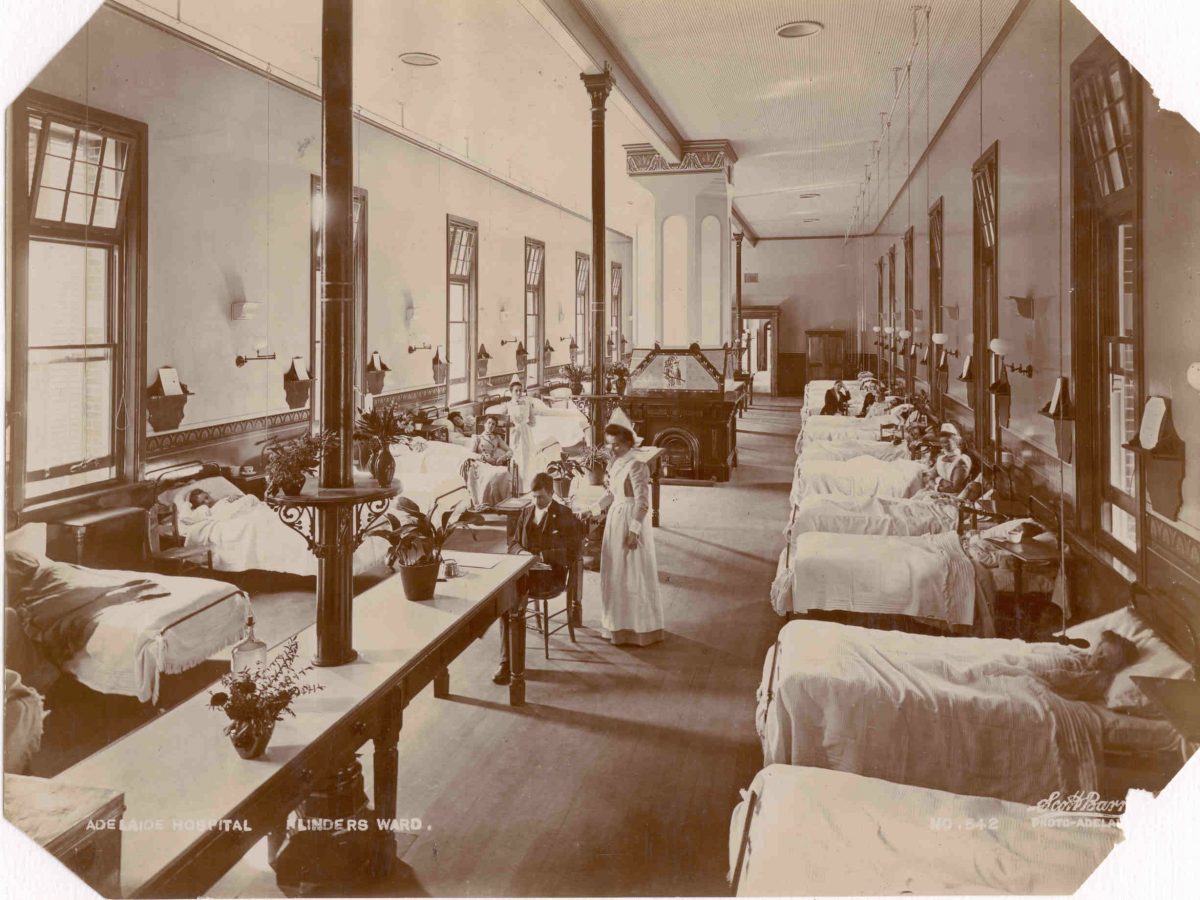
Flinders Ward was named after Lieutenant Matthew Flinders, who was the first Royal Navy explorer to chart and report on the coastal areas of South Australia, as well the first person to use the term ‘Australia’ in his published account of his voyage ‘A Voyage to Terra Australis’ in 1814.
It was a long ward with low black beds along each wall. The walls were painted brown up to six feet and above that to the ceiling was an unattractive olive green. There was gas lighting with a central fire place in the middle of the room.
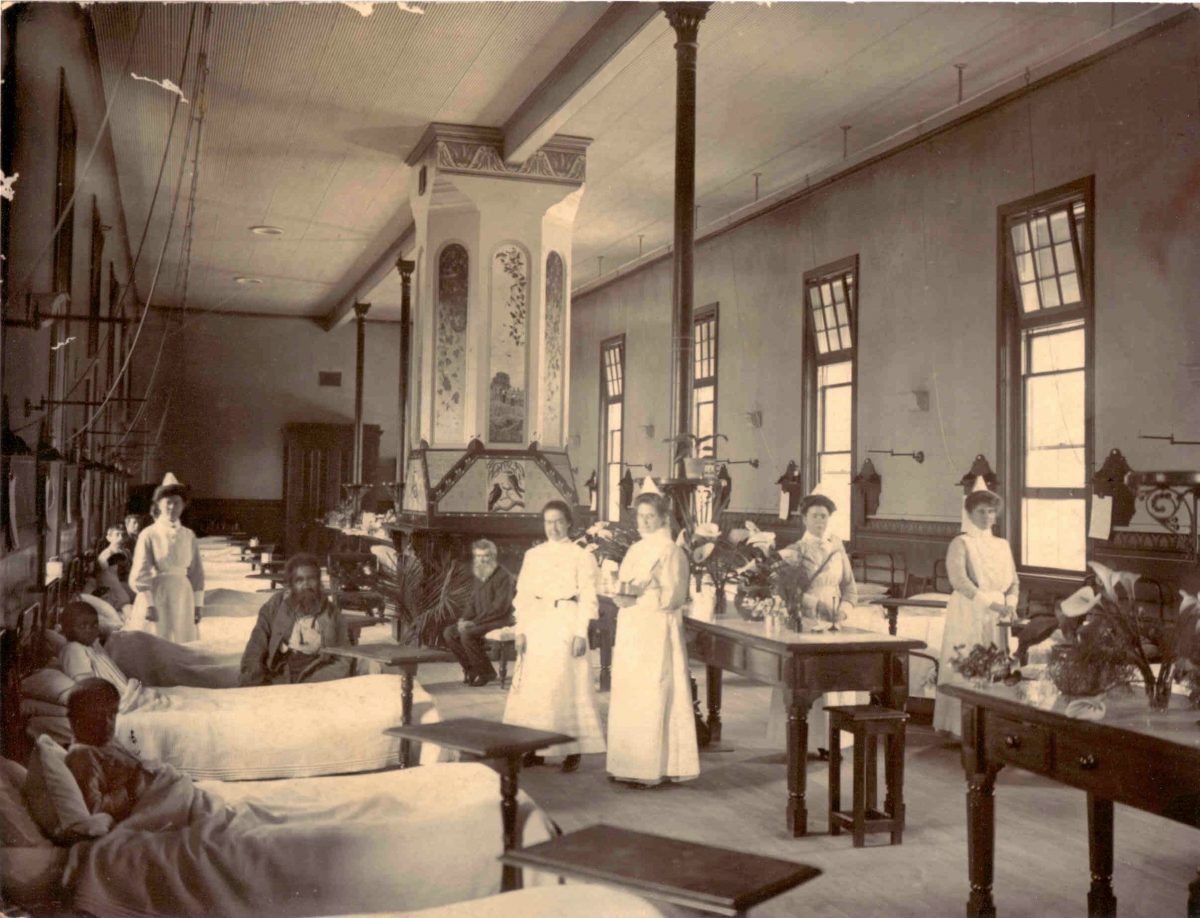
Over the years the function of the ward changed; in the early 1900s it was a mixed medical ward with both female and male patients. However, by 1935, the ward was predominately male, with upstairs Light Ward, becoming a female medical ward. Balconies, upstairs and downstairs, were added to the original building, housing additional patients. Initially these were open to the elements and then enclosed later on. During the polio epidemic in the 1930s, the verandahs were used for Poliomyelitis cases.


On the right side of the ward was the kitchen and next door was the pan and bottle room. The kitchen was used to help prepare special diets such as meals for diabetic patients and others on special diets whose evening meals were usually served later than the regular 4.30 tea-time. The pan and bottle room had a sink for washing up and as Flinders was a medical ward, one of the daily duties was testing urine samples, which was done in this room.
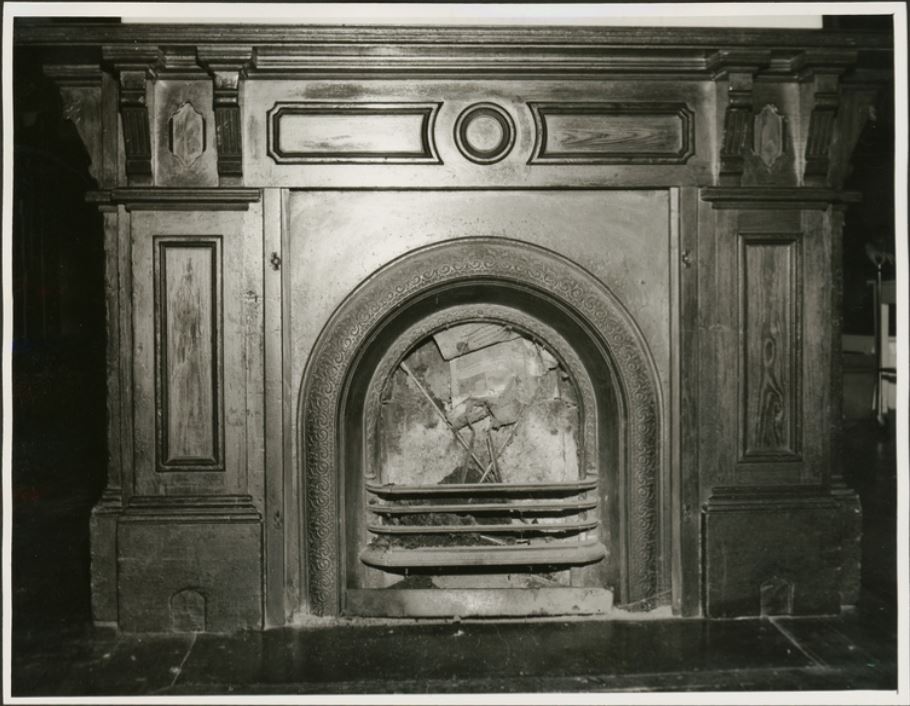
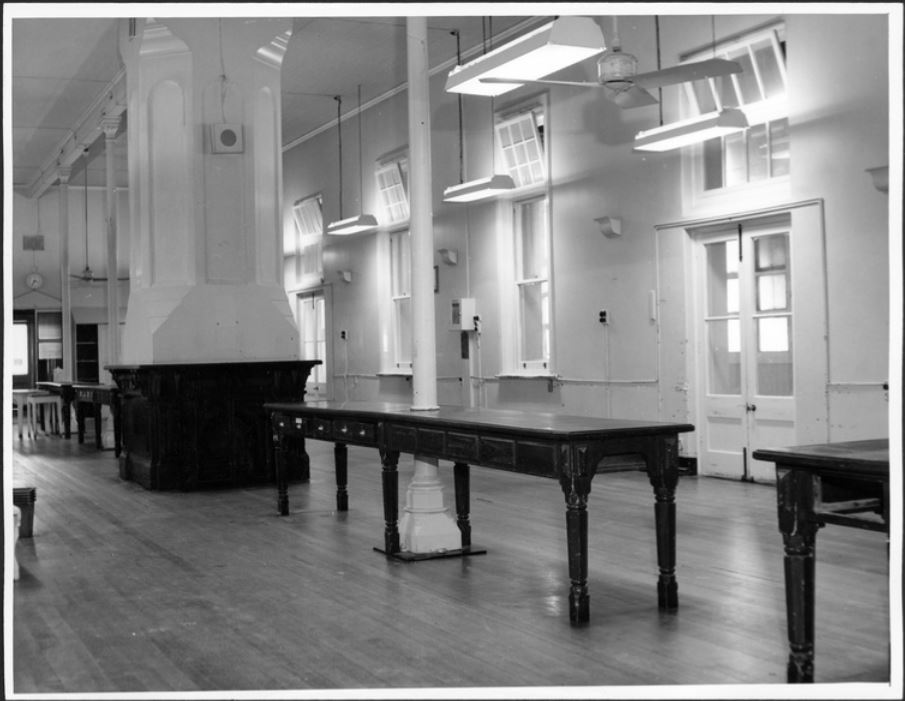
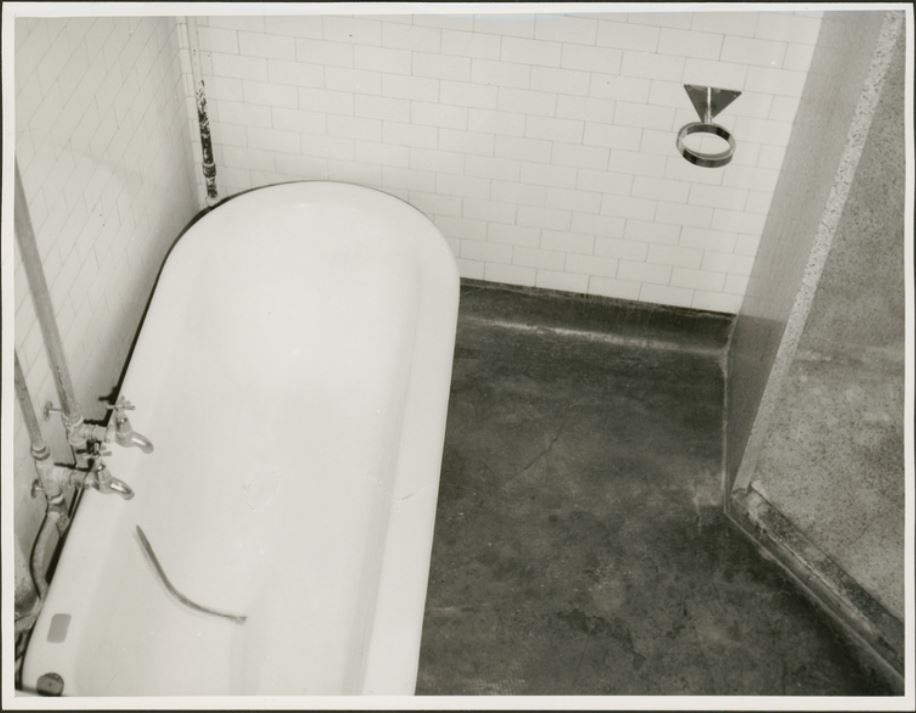
On the left side of Flinders were two isolation wards that were mainly used for tetanus patients. To keep these rooms as quiet as possible, green baize covered the door and became colloquially known as the ‘green rooms’.
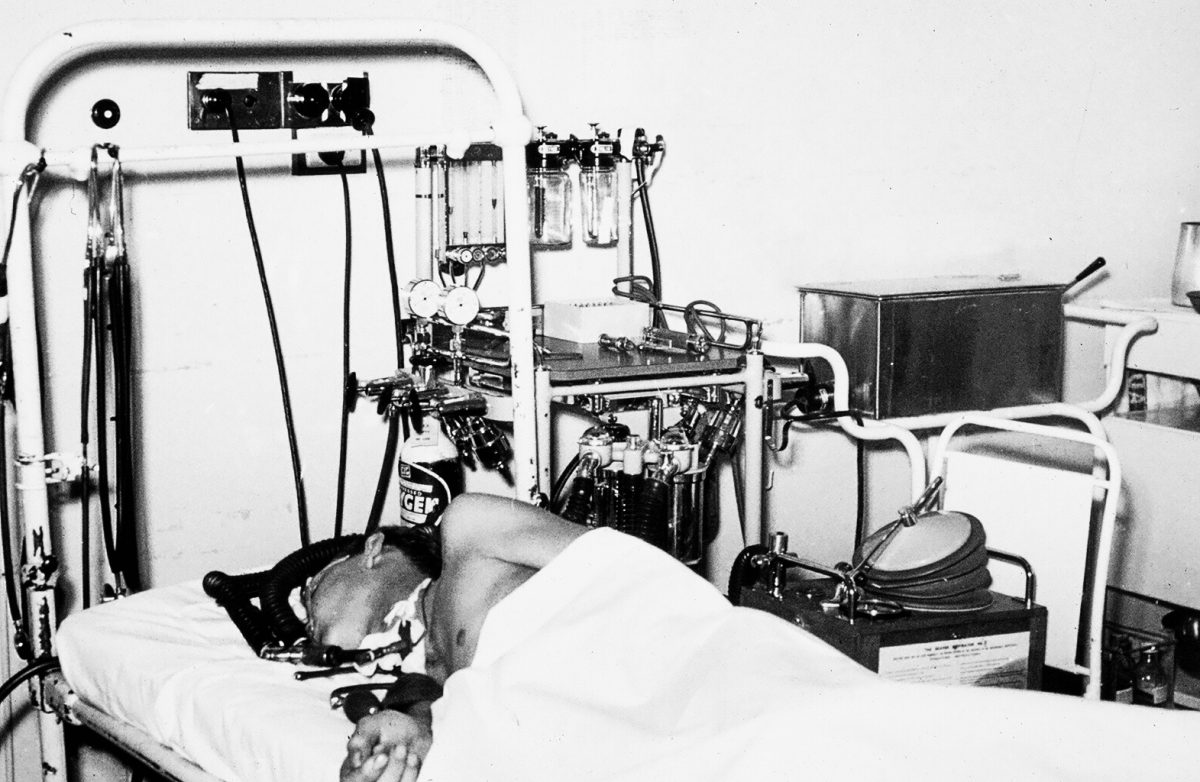
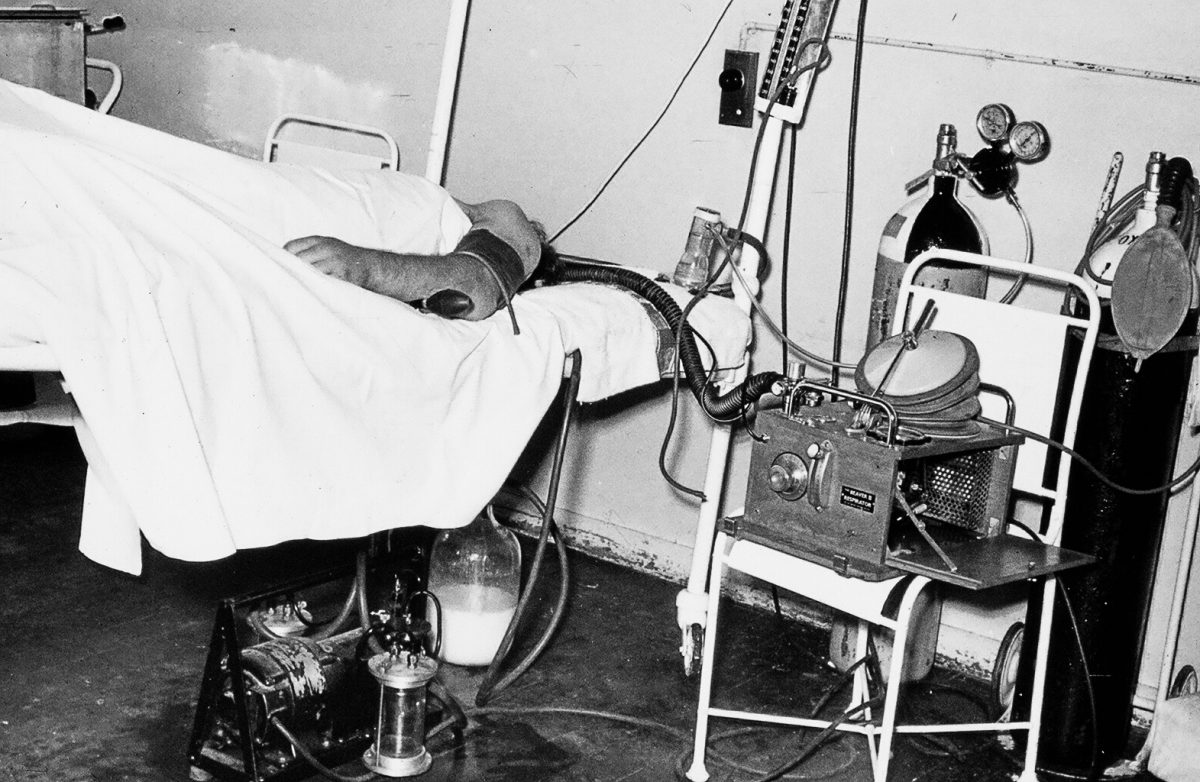
At the age of 17 [1936], I was admitted to Finders wards with typhoid fever … I was on the right side of the ward. At the bottom end was the kitchen section on the right and on the left side was the bottle and pan area. Evening meal was the same every day. A bowl of sago and slices of bread and butter. I have not eaten sago since May 1936
Mr TR Furnival, 2004
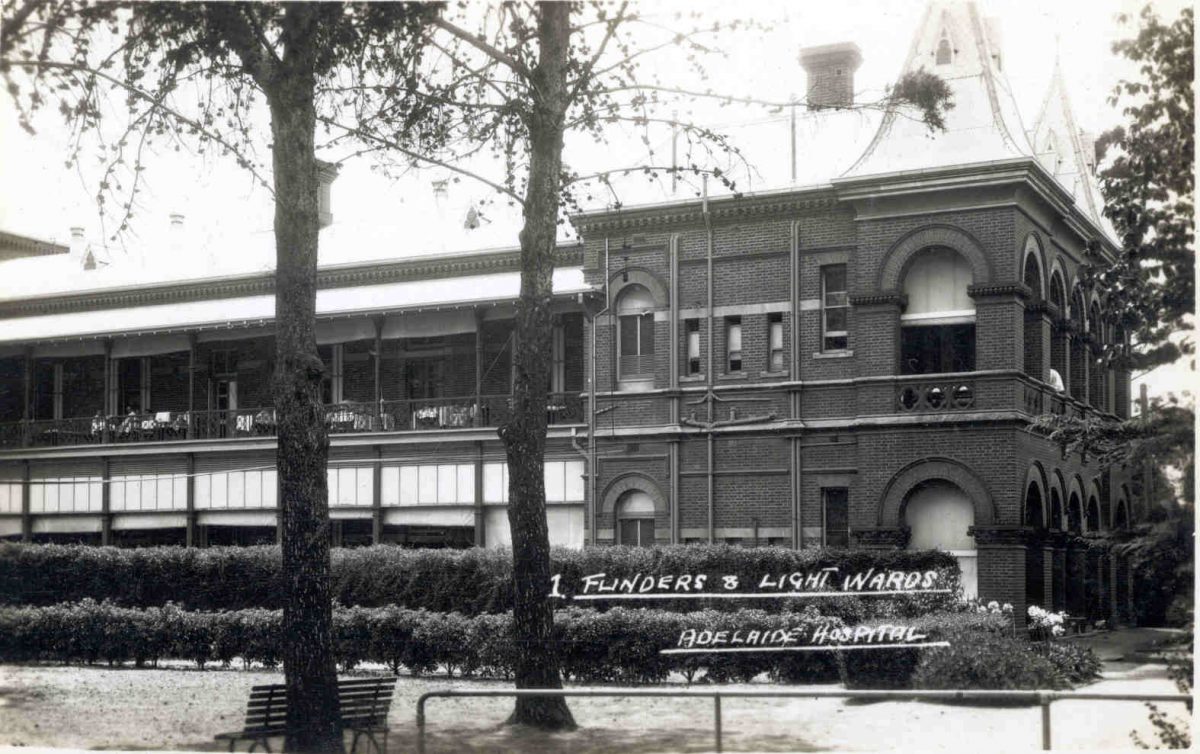
In August 1970, Flinders and Light Wards were demolished as part of the Royal Adelaide Hospital redevelopment project.
By Margot Way, CALHN Health Museum